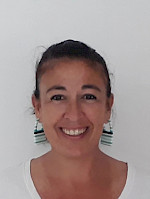The Guaiamum in the São João River and the management of protected areas: from the diversity of actors to social conflicts


The book, "The Guaiamum in the São João River and the Management of Protected Areas: From the Diversity of Actors to Local Conflicts" is part of a trilogy resulting from the Guaiamum Project – Bioecology and Ethno-knowledge for Conservation, whose aim is to promote strategies that reconcile the conservation and protection of the guaiamum with local ways of life, emphasising traditional knowledge and giving a voice to local actors, mainly fishermen. The project was carried out in the area encompassing the municipalities of Cabo Frio and Casimiro de Abreu, both in Rio de Janeiro, Brazil. The focus is the São João River and its surroundings, where the areas are protected by two Conservation Units: the São João River/Mico-Leão-Dourado Environmental Protection Area and the Mico-Leão-Dourado Municipal Natural Park. However, as it is a relatively extensive area located near residential neighbourhoods, rich in vegetation, and home to one of the region's main rivers, it naturally attracts actors with multiple interests. This diversity often leads to conflicts, either through disputes over land use or even due to the impact of activities carried out in a disorganised manner.
In the context of these varied demands for the use and appropriation of space, we have local fishermen, or those from other cities or states, who make the capture of "guaiamum" (Cardisoma guanhumi) one of their activities and a source of livelihood. However, since 2014, fishing for "guaiamum" has been prohibited nationwide as this species was included in the "National Official List of Endangered Species – Fish and Aquatic Invertebrates" as "critically endangered." Only later, in 2018, did the legislation offer an opportunity to resume this activity in protected areas, provided a Local Management Plan (LMP) for the species was developed and implemented. It is understood that this would be an opportunity to harmonise the conservation of "guaiamum" with the continuation of the traditionally practised fishing activity. In light of these legal guidelines, the Chico Mendes Institute for Biodiversity Conservation (ICMBio) and the Fisheries Institute of the State of Rio de Janeiro (Fiperj) held a series of participatory meetings between December 2019 and March 2020 to draft the LMP. In these meetings, artisanal fishermen from the São João River/Mico-Leão-Dourado Environmental Protection Area shared information about guaiamum fishing through dialogue tools such as participatory mapping and seasonal calendars.
The Guaiamum Project: Bioecology and Ethno-knowledge for Conservation emerged to strengthen the LMP by generating a comprehensive set of data. In this context, characterising existing uses and conflicts in this region becomes necessary. It can significantly contribute to understanding which activities conflict with artisanal fishing or even the conservation of the environment or the "guaiamum", thus threatening them. However, the perspective addressed here is that of one of these actors: the artisanal fishermen from the Arroz (Casimiro de Abreu) and Chavão (Cabo Frio) communities.
We invite you to read this work and explore the topic further. Click here to download it.
Fonseca, M., Alves, F., Mota, L., & Macedo, M. (2022). O Guaiamum no Rio São João e a gestão das áreas protegidas: Da diversidade de atores aos conflitos sociais. (2a edição). Projeto Guaiamum e autores. http://hdl.handle.net/10400.2/12349
